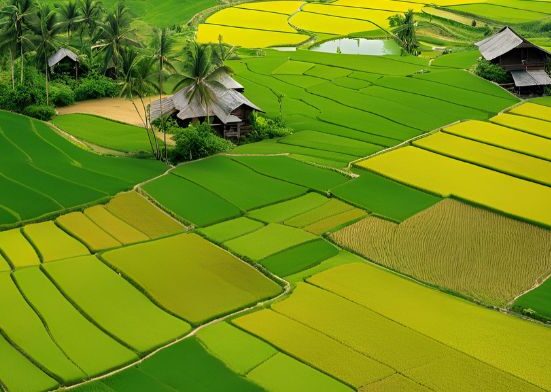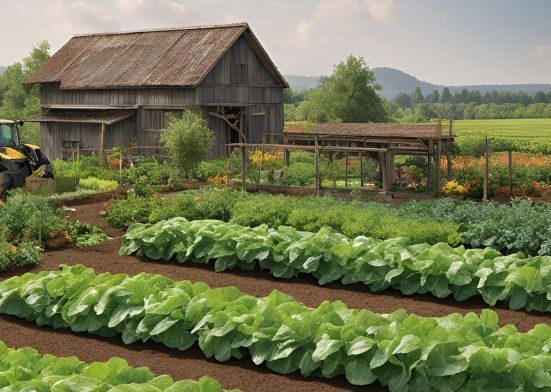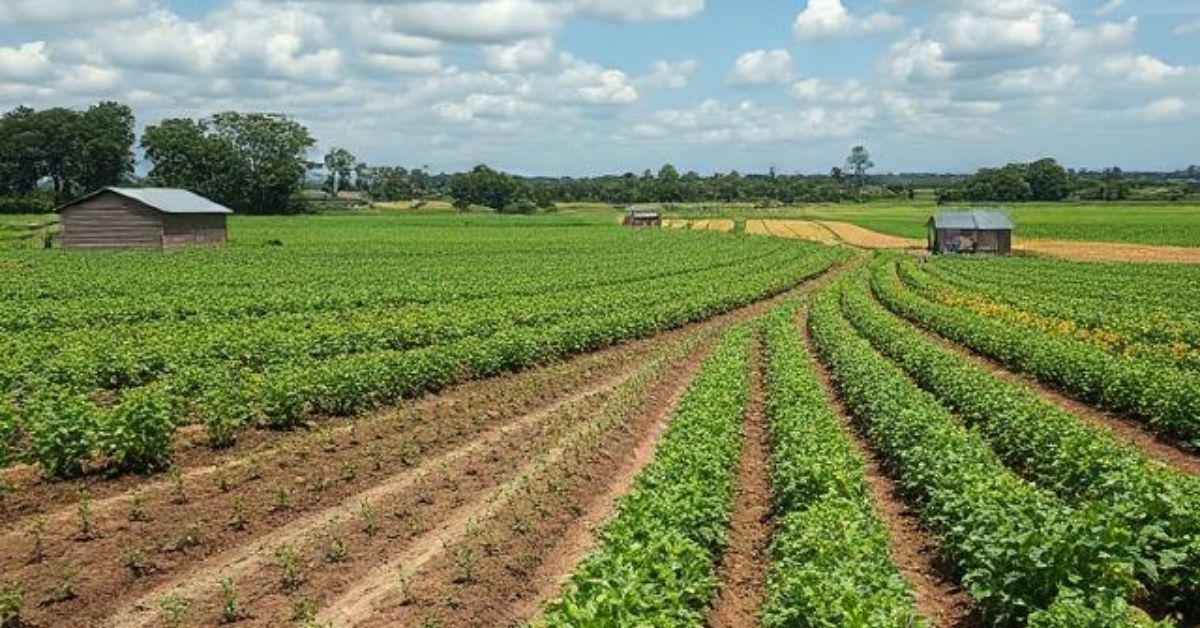Agriculture has been the backbone of human civilization for millennia, shaping societies, economies, and environments. Systematic agriculture, a structured and methodical approach to An important factor in this change has been farming. From its ancient origins to modern manifestations, systematic agriculture has enabled humanity to feed growing populations, adapt to environmental challenges, and drive technological innovation. This blog post explores the origins of systematic agriculture, its significance in human history, and its profound impact on the modern world.
The Origins of Systematic Agriculture
The Dawn of Agriculture
Systematic agriculture emerged around 10,000 BCE during the Neolithic Revolution, when humans transitioned from nomadic hunter-gatherer lifestyles to settled farming communities. This shift occurred independently in regions such as the Fertile Crescent (modern-day Middle East), the Indus Valley, China, Mesoamerica, and the Andes. The domestication of plants like wheat, barley, rice, and maize, alongside animals such as cattle, sheep, and goats, laid the foundation for organized farming.
Early farmers developed systematic practices to maximize yields and ensure food security. They observed seasonal patterns, soil fertility, What Is Agriculture A Simple Guide and water availability, creating rudimentary agricultural systems. systematic agriculture definition These included crop rotation, selective breeding, and irrigation techniques, which marked the beginning of systematic agriculture.
Early Innovations
In Mesopotamia, one of the cradles of civilization, farmers constructed intricate irrigation systems to harness the Tigris and Euphrates rivers. By 3000 BCE, they used plows pulled by oxen, enabling more efficient tilling of fields. Similarly, in ancient Egypt, the annual flooding of the Nile was leveraged to create fertile fields, with farmers developing calendars to predict planting and harvesting times. These innovations demonstrate how systematic approaches were integral to early agricultural success.
In Asia, the development of rice paddies in China and the Indian subcontinent required meticulous water management and terracing. These systems demanded cooperation, planning, and an understanding of ecological principles, further solidifying the importance of structured agricultural practices.
What is Systematic Agriculture?
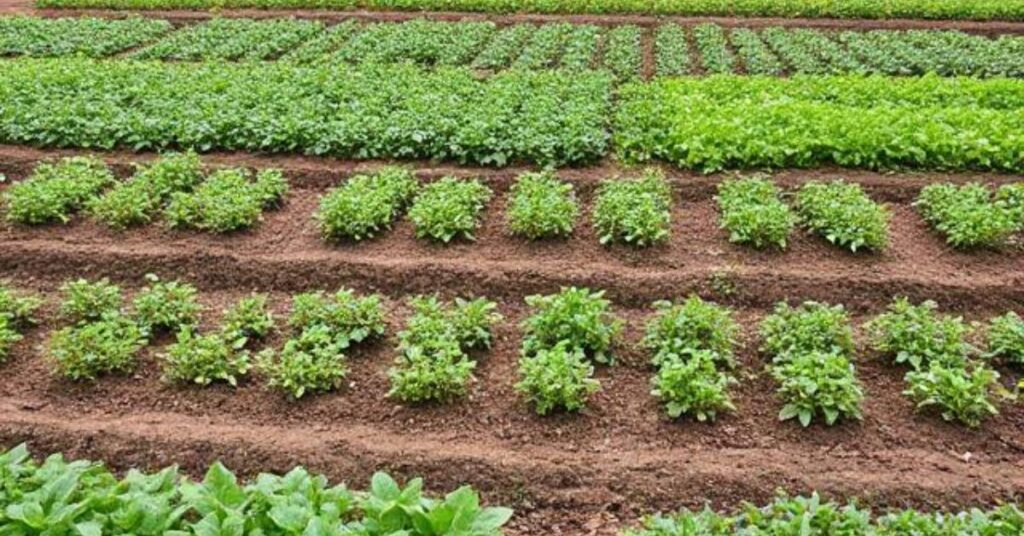
Systematic agriculture is the organized and planned practice of farming that involves the consistent and controlledthe domestication of animals and the production of crops. Unlike early human societies that relied on hunting and gathering, systematic agriculture allows people to grow food intentionally and regularly, leading to food security and stable communities.This form of agriculture first began during Around 10,000 years ago, during the Neolithic Era, humans transitioned from a nomadic to a more settled way of life. way of life. Early civilizations started cultivating plants like wheat, barley, and rice, and domesticating animals such as sheep, goats, and cattle. This change represented a pivotal moment in human history. , often called the Agricultural Revolution.
Key features of systematic agriculture include seasonal crop planning, irrigation, using farming tools, storing surplus produce, and breeding livestock. Understanding Food Costs Providing a steady food supply led to the rise of villages, towns, and complex societies.Systematic agriculture has evolved with modern techniques such as mechanization, fertilizers, and sustainable farming practices. It is vital in feeding the global population and shaping economies and cultures worldwide.
The Importance of Systematic Agriculture
Food Security and Population Growth
Systematic agriculture has been a cornerstone of food security, enabling societies to produce surplus food. This surplus supported population growth and the rise of urban centers. For example, the agricultural surplus in Mesopotamia allowed for the development of city-states like Uruk and Babylon, where specialized labor, trade, and governance flourished.
Systematic agriculture reduced the risks of famine by ensuring a stable food supply and allowed communities to plan for the future. definition systematic agriculture It also facilitated cultural and technological advancements, as people could devote time to activities beyond subsistence, such as art, science, and governance.
Economic Development
Agriculture has long been a driver of economic prosperity. Systematic farming practices increase productivity, leading to trade in agricultural goods. In ancient Rome, large-scale estates known as latifundia produced olive oil, wine, and grain for export. , fueling the empire’s economy. Similarly, in medieval Europe, the three-field system—a rotational farming method—boosted crop yields and supported feudal economies.
In the modern era, systematic agriculture underpins global food markets. Countries like the United States, Brazil, and India rely on advanced farming techniques to produce vast quantities of crops for domestic consumption and export. This has created interconnected economies where agricultural trade influences global prices and geopolitical relationships.
Social and Cultural Impacts
Systematic agriculture has shaped social structures and cultural practices. In ancient societies, land ownership and agricultural production determined wealth and power. For instance, the European feudal system was built on agricultural labor, with peasants working land owned by lords. In many cultures, agricultural cycles influenced religious rituals, festivals, and calendars, such as the harvest festivals in ancient Greece and the rice-planting ceremonies in Japan.
Moreover, agriculture has fostered community cooperation. Modern Commercial Agriculture From communal irrigation systems in ancient Bali to modern farming cooperatives, systematic agriculture has encouraged collective efforts to manage resources and share knowledge.
The Evolution of Systematic Agriculture
The Agricultural Revolution
With the European Agricultural Revolution in the 18th and 19th centuries, systematic agriculture underwent a sea change. innovations like Jethro Tull’s creation of the seed drill , improved planting efficiency. The enclosure movement consolidated small landholdings into larger, more manageable farms, while crop rotation systems enhanced soil fertility and yields, like the Norfolk four-course system.
The Industrial Revolution drove the mechanization of farming, further transforming agriculture. The steam-powered tractor, reaper, and thresher inventions reduced labor demands and increased productivity. These advancements laid the groundwork for modern systematic agriculture.
The Green Revolution
The Green Revolution brought high-yielding crop varieties in the middle of the 20th century. synthetic fertilizers, and pesticides, dramatically increasing global food production. Led by scientists like Norman Borlaug, this movement focused on systematic approaches to breeding crops resistant to pests and diseases. Irrigation systems and mechanized farming equipment were scaled up, particularly in developing countries like India and Mexico.
The Green Revolution averted widespread famine and boosted agricultural output, but it also raised concerns about environmental degradation, How Can Farmers Cut Waste in Sustainable Agriculture dependency on chemical inputs, and socioeconomic inequalities. These challenges prompted further refinements in systematic agriculture, emphasizing sustainability and equity.
Modern Systematic Agriculture: Practices and Technologies
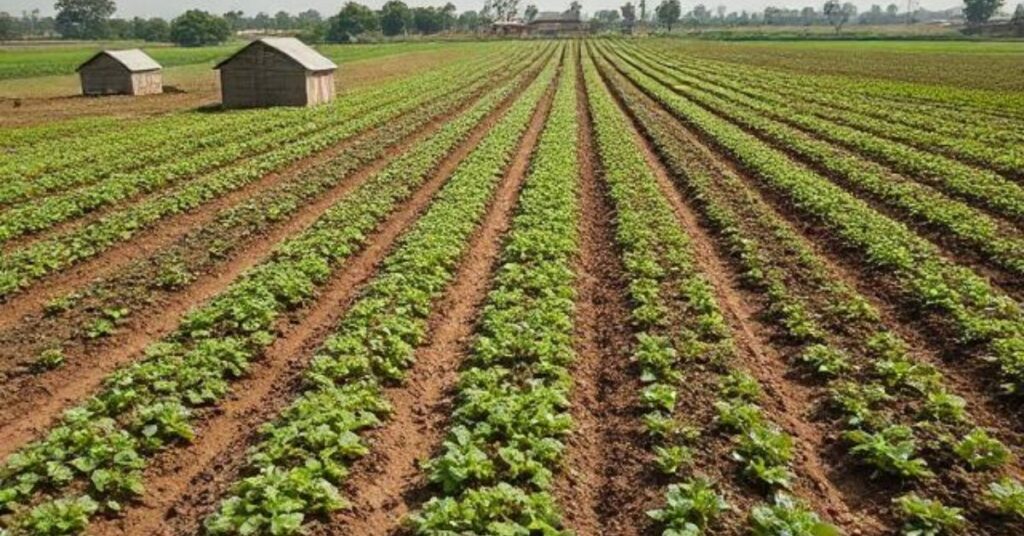
Precision Agriculture
Today, systematic agriculture is defined by precision and technology. Precision agriculture uses data-driven tools to optimize farming practices. Global Positioning Systems (GPS), drones, and satellite imagery enable farmers to monitor soil health, crop growth, and water usage with unprecedented accuracy. Real-time data is provided by sensors and Internet of Things (IoT) devices. lowering waste and the impact on the environment by enabling the targeted use of pesticides and fertilizers.
For example, variable rate technology (VRT) adjusts the amount of inputs like seeds or fertilizers based on specific field conditions. This improves yields and minimizes resource use, aligning with sustainable farming goals.
Genetic Engineering and Biotechnology
Biotechnology has revolutionized systematic agriculture. Genetically modified organisms (GMOs) are engineered to resist pests, tolerate drought, or enhance nutritional content. For instance, Bt crops produce a natural insecticide, reducing the need for chemical sprays. Golden Rice, enriched with vitamin A, addresses malnutrition in developing regions.While GMOs have increased productivity and resilience, they remain controversial due to concerns about biodiversity, corporate seed control, and long-term ecological effects. Systematic agriculture balances these benefits and risks through rigorous testing and regulation.
Sustainable and Regenerative Agriculture
In response to environmental challenges, modern systematic agriculture increasingly prioritizes sustainability. Practices like no-till farming, cover cropping, and agroforestry enhance soil health, sequester carbon, and reduce erosion. Integrated pest management (IPM) combines biological, cultural, and chemical methods to control pests sustainably.Regenerative agriculture takes this further by focusing on restoring ecosystems. Farmers use rotational grazing, composting, and polyculture to rebuild soil fertility and biodiversity. Sweet Potatoes and Irish Potatoes: A Tasty Showdown These actions support international initiatives to address climate change. and ensure long-term food security.
Vertical Farming and Urban Agriculture
Urbanization and land scarcity have spurred innovations like Crops are produced in stacked layers under regulated conditions in agricultural production. under controlled conditions. Using hydroponics, aeroponics, and LED lighting, vertical farms produce high yields with minimal land and water. Companies like Plenty and AeroFarms are pioneering this approach, bringing fresh produce to urban centers.Urban agriculture, including rooftop gardens and community plots, complements these efforts by promoting local food production and community engagement. These systems exemplify how systematic agriculture adapts to modern challenges.
The Modern Impact of Systematic Agriculture
Feeding a Growing Population
By 2050, it is anticipated that there will be 9.7 billion people on the planet. , placing immense pressure on food systems. Systematic agriculture is critical to meeting this demand. Advanced breeding techniques, precision farming, and sustainable practices increase yields while minimizing environmental harm. For example, with less inputs, the System of Rice Intensification (SRI) has increased rice production in Asia and Africa.But there are still difficulties. Among the challenges include soil deterioration, water scarcity, and climate change. agricultural productivity. Systematic agriculture must continue to innovate, integrating climate-resilient crops, water-efficient irrigation, and renewable energy solutions.
Environmental Sustainability
Systematic agriculture has a complex relationship with the environment. While it has driven deforestation, soil depletion, and greenhouse gas emissions, modern practices are addressing these issues. Agroecology, which applies ecological principles to farming, promotes biodiversity and resilience. Carbon farming, which sequesters soil carbon, is gaining traction as a climate solution.International outlines such as the Sustainable Development Goals (SDGs) of the United Nations emphasize sustainable agriculture. Initiatives such as the 4R Nutrient Stewardship (right source, rate, time, and place) guide farmers in reducing environmental impact while maintaining productivity.
Economic and Social Equity
Systematic agriculture shapes global economies but also highlights disparities. Large-scale agribusinesses dominate markets, often marginalizing smallholder farmers. In developing countries, where 80% of food is produced by smallholders, access to technology, credit, and markets is limited. Systematic approaches, such as farmer cooperatives and digital platforms, are bridging these gaps by providing training and resources.Gender equity is another critical issue. In many areas, women make up almost half of the agricultural workforce. many regions but often lack land rights and decision-making power. Programs like the UN’s Gender in Agriculture Partnership promote inclusive policies to empower women farmers.
Technological and Cultural Shifts
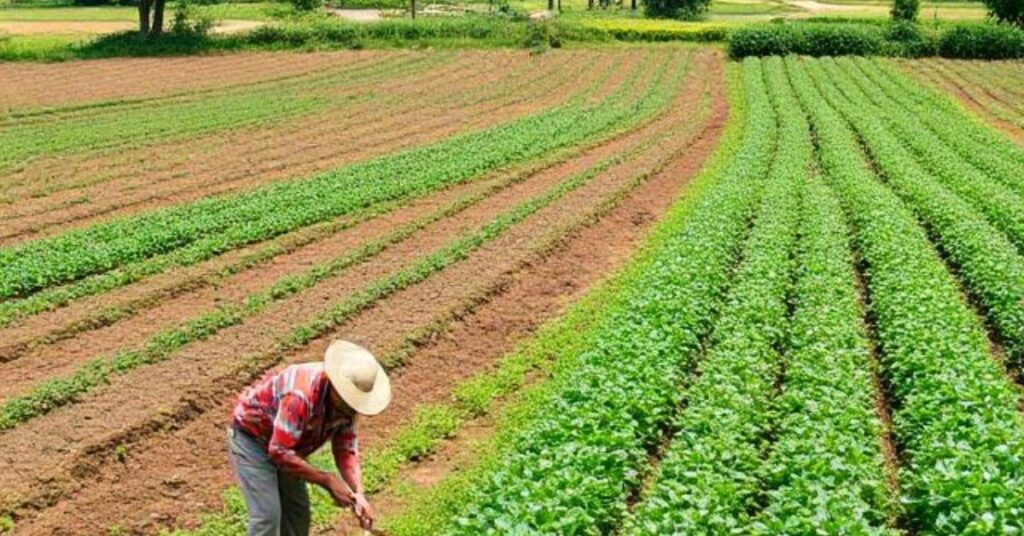
Integrating artificial intelligence (AI), robotics, and blockchain transforms systematic agriculture. AI-powered tools predict crop yields and optimize supply chains, while robots automate tasks like harvesting and weeding. Blockchain ensures transparency in food traceability, addressing consumer demands for ethical sourcing.Culturally, systematic agriculture is reshaping consumer behavior. The rise of organic, local, and plant-based diets reflects growing awareness of sustainability and health. Farmers’ markets and farm-to-table movements reconnect urban consumers with food production, fostering appreciation for systematic agricultural practices.
Challenges and Future Directions
Despite its achievements, systematic agriculture faces significant challenges. Climate change disrupts growing seasons and increases extreme weather events, necessitating adaptive strategies. The overuse of chemical inputs has led to soil degradation and water pollution, prompting calls for regenerative practices. Additionally, global trade policies and market volatility can destabilize agricultural economies.Looking ahead, systematic agriculture must embrace innovation and collaboration. Public-private partnerships can accelerate technology adoption, while international research networks can develop climate-resilient crops. Education and training programs will empower farmers to adopt sustainable practices, ensuring the sector’s resilience.
Conclusion
From ancient civilizations to modern technological advancements, systematic agriculture has been a driving force in human progress. Human development, from prehistoric societies to contemporary technological breakthroughs. Its ability to provide food security, support economic growth, and adapt to environmental challenges underscores its importance. The world’s population is increasing, and the climate , and resource constraints, systematic agriculture will remain at the forefront of global solutions. By blending tradition with innovation, it will continue to shape a sustainable and equitable future for future generations.
FAQ
What is systematic agriculture?
Systematic agriculture is the organized method of farming that includes growing crops and raising animals in a planned and regular way.
When did systematic agriculture begin?
It began around 10,000 years ago during the Neolithic Era, when people moved from hunting and gathering to farming.
Why is systematic agriculture important?
It provides a steady food supply, supports larger populations, and helps form early human civilizations and societies.
What are the main features of systematic agriculture?
The main features include crop cultivation, animal domestication, irrigation, food storage, and farming tools.
How did systematic agriculture change human life?
It allowed people to settle in one place, build permanent homes, develop towns, and create organized societies.
What are examples of early crops and animals?
Early crops included wheat, barley, and rice. Sheep, goats, pigs, and cows were common domesticated animals.



